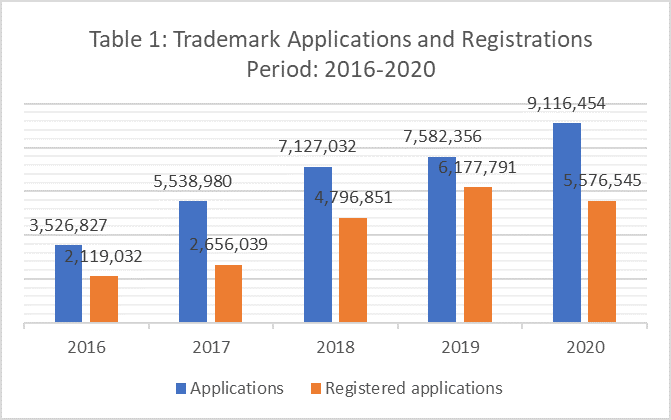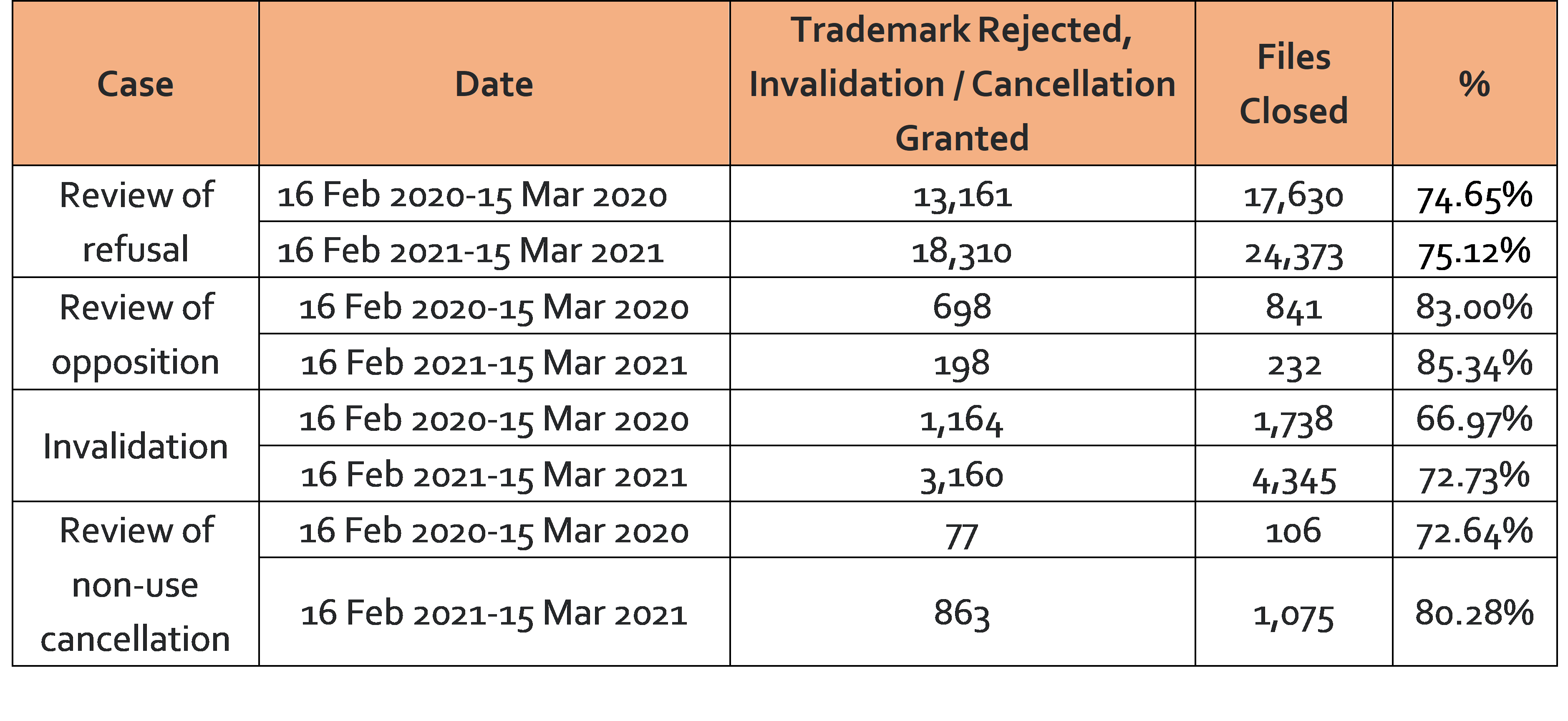Resources
Jun 25,2021
Newsletter n° 15 WHD Insights: TM ∣ Trademark Prosecution in China: Statistics and Trend Analysed
In 2020, the China National Intellectual Property Administration (CNIPA) received a record-high 9.1 million trademark applications, up by a strong 20% from 2019. The number of trademarks approved for registration, however, declines 9.7% from the last year. This flags a downward trend in terms of approval rate, decreasing from 81% to 61% within just one year time. The trademark application and registration figures as shown in Table 1 are reproduced from the CNIPA website, with the annual statistical period starting from 16th December of last year and ending on 15th December of the ensuing year.

In contrast to the uphill task of obtaining a trademark registration, securing a cancellation or invalidation decision of a registered trademark has been increasingly easier in China.

Table 2: Summary of Decisions on Various Cases
Table 2 compares the statistical data from the CNIPA’s latest Monthly Report on Trademark Review and Adjudication Cases for the period from 16 February 2021 to 15 March 2021[1] with those from a monthly report for the same period last year[2]. Other than the slightly elevated rate in terms of rejection rate in the review of refusal cases and review of opposition cases, the table corroborates a noticeable growth in the rate of trademark invalidation and cancellation.
As far as invalidation proceeding is concerned, invalidation request is upheld in around 67% cases in February 2020, compared to 73% in the same period in 2021. As for the review of the non-use cancellation proceeding, the burden is on the trademark owners to prove genuine trademark use in relation to the goods/services for which the mark is registered, and the CNIPA is on the trajectory to put use evidence under stringent scrutiny, which might help explain the growth in cancellation rate from 73% (2020) t0 80% (2021).
The statistics suggest that the CNIPA is maintaining an increasingly crowded trademark registry that has been constantly plagued by bad faith trademark filings and might be further cluttered by the defensive trademark registrations filed by legitimate brand owners as a countermeasure. By employing approaches like rejecting fishy trademark applications, upholding cancellation actions against trademarks that have not been put into genuine use, granting invalidation against trademarks whose registration is obtained by unfair means (bad faith registration), the CNIPA has apparently upped efforts in decluttering the registry. Brand owners navigating the trademark landscape need to keep abreast of the CNIPA practice and install an agile and business savvy brand enforcement strategy to maintain a healthy trademark portfolio and keep the bad actors in check.
Co-authored by Lei Yongjian & Zhang Wenjun
